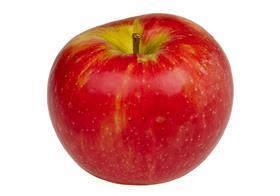
Despite this year’s New Zealand apple crop averaging out at a smaller size, sales look to have gone well in the North American market, and new plantings are pointing to further success down the road.
In the US, Royal Gala sales began strongly with an early finish of stored domestic fruit, and continued on well with later varieties like Jazz. Average New Zealand apple prices in the US were up 28 per cent this year, David Nelley of importer Oppenheimer told Fresh Fruit Portal.
“A lot of new varieties are coming out of New Zealand such as Divine, Temptation, Smitten and Envy apples which are really giving consumers a lot more flavour during the summer months,” he said. “All the retailers I have spoken to have reported that apple sales were up during the summer months despite reduced supplies.”
New Zealand is taking heed of what is finding success in the US market, and the flow of varieties is not just one way.
Orchardists in South Canterbury in New Zealand are reportedly in the process of planting more than 50,000 trees of the Honeycrisp variety. Honeycrisp has established itself as a premium apple in the US, and regularly sells at twice the price of other apple varieties.
The new plantings are being coordinated by Honeycrisp New Zealand, which is licenced to grow the variety by the University of Minnesota. The expansion of Honeycrisp production in New Zealand has taken a few years to get moving, according to the organisation’s co-director Peter Bennett.
“It’s only been very recently that we’ve been able to get the investors and growers on board; it’s taken several years to get everything into place,” he told Fairfax.
“South Canterbury’s cold climate appears to be ideally suited for growing this apple. Research shows it only grows on the 45th parallel in the Southern Hemisphere, which limits it to New Zealand and South America.”
“It’s quite the cult item in the US. People seem to really appreciate its texture and sweetness. It’s extremely juicy and it doesn’t go brown like other apples.”
Some small Honeycrisp plantings already exist in New Zealand, and Bennet says the response to trial shipments to the US last year were “amazing”.



